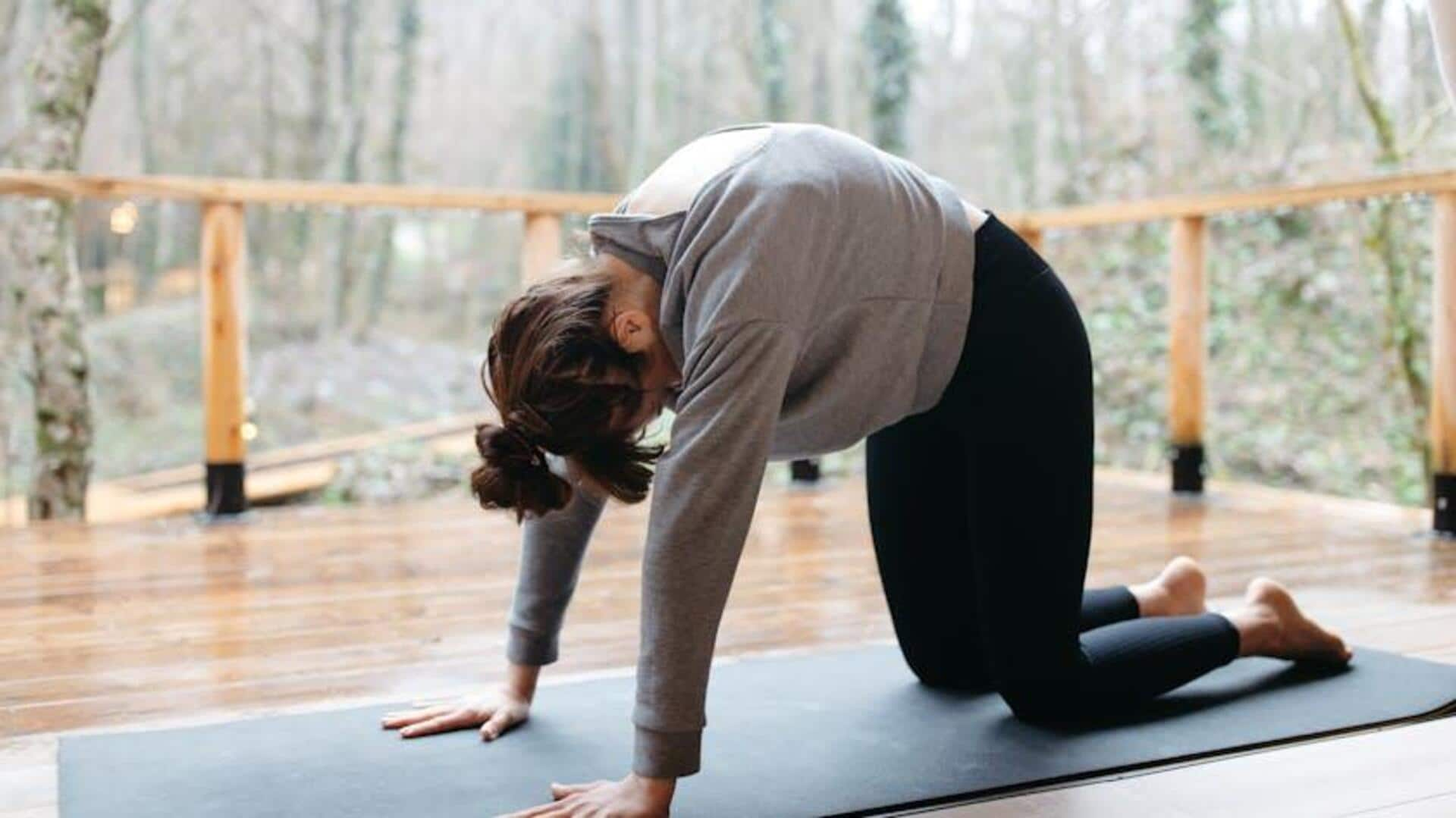
Do these upper body stretches today
What's the story
Ribcage mobility is extremely important for good posture and efficient breathing. A flexible ribcage can improve your overall physical performance and minimize the risk of injuries. By including certain exercises in your routine, you can improve your ribcage's flexibility, allowing for better movement and function. Here are five exercises that can help improve your ribcage's mobility, each targeting different areas of flexibility and strength.
Tip 1
Cat-cow stretch
The cat-cow stretch is a gentle way to warm up your spine and increase flexibility in your ribcage area. Start on all fours with your hands placed under your shoulders and knees under your hips. Inhale as you arch your back, dropping your belly towards the floor (cow position), then exhale as you round your back towards the ceiling (cat position). Repeat this sequence a few times to promote spinal flexibility.
Tip 2
Thoracic spine rotation
Thoracic spine rotation improves mobility in the upper back, which directly impacts ribcage movement. Just sit or stand with a straight back, place one hand behind your head, and rotate your torso to one side while keeping hips stable. Hold briefly before returning to center and repeating on the other side. This exercise enhances rotational movement crucial for various daily activities.
Tip 3
Side-lying windmill stretch
The side-lying windmill stretch works on shoulder and thoracic spine mobility, helping with ribcage flexibility. Lie on one side with knees bent at a right angle to the body. Extend arms straight out in front of you, then slowly move the top arm in a circular motion over your head until it reaches behind you like a windmill blade while keeping hips stable.
Tip 4
Seated forward bend with twist
This exercise combines forward bending with twisting to improve overall flexibility of the spine, including that of the ribcage region. Sit with legs extended forward; bend at waist reaching towards toes while simultaneously twisting torso gently from left to right. Use opposite hand against outer thigh for support during twist phase.
Tip 5
Deep breathing exercises
Deep breathing exercises expand lung capacity by using diaphragm and intercostal muscles, aiding rib expansion over time. It improves chest wall elasticity, enhancing functional range for daily movements. Regular practice of controlled inhalation-exhalation cycles, adjusted for individual needs, maximizes potential benefits for respiratory system efficiency without strain.